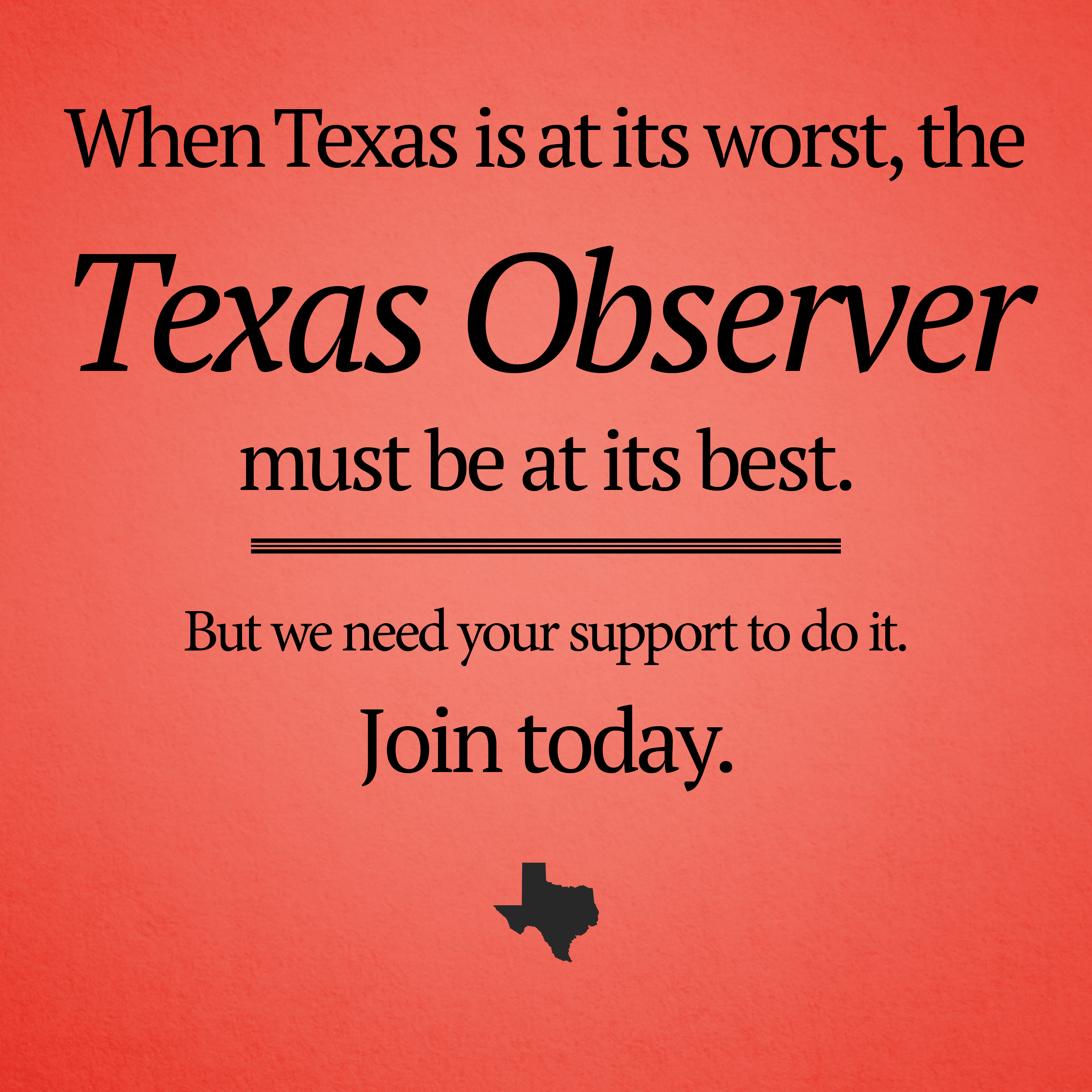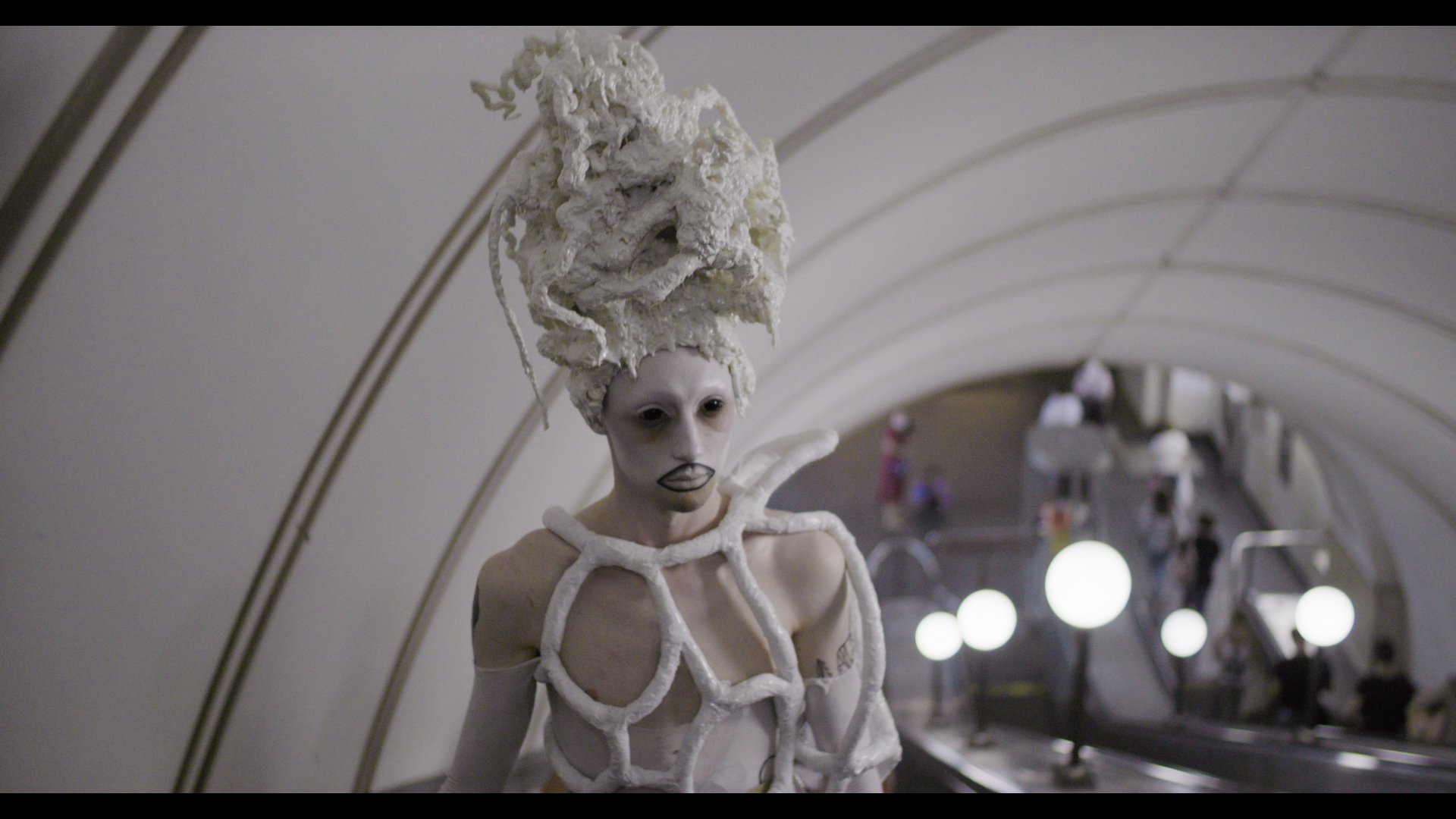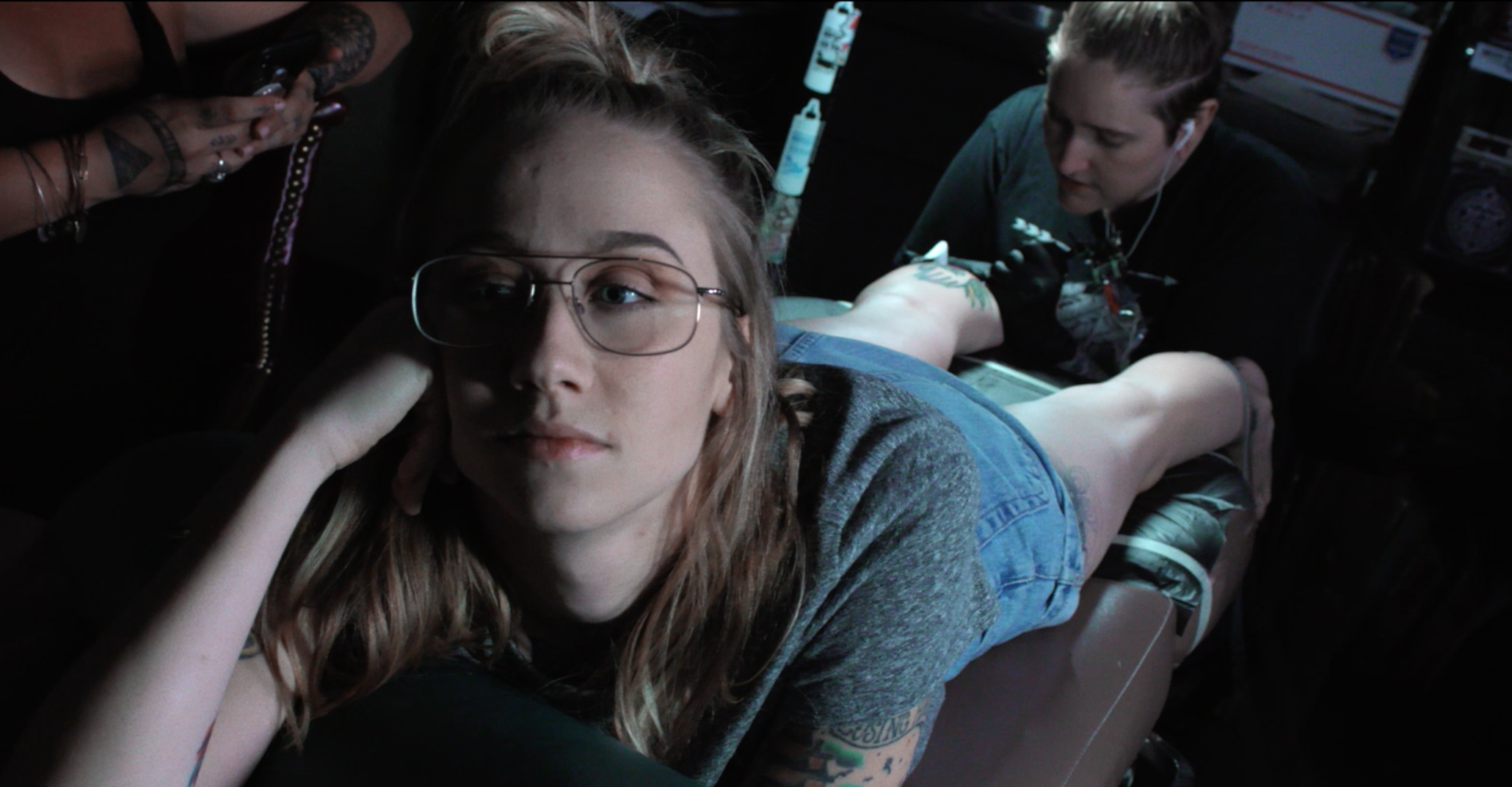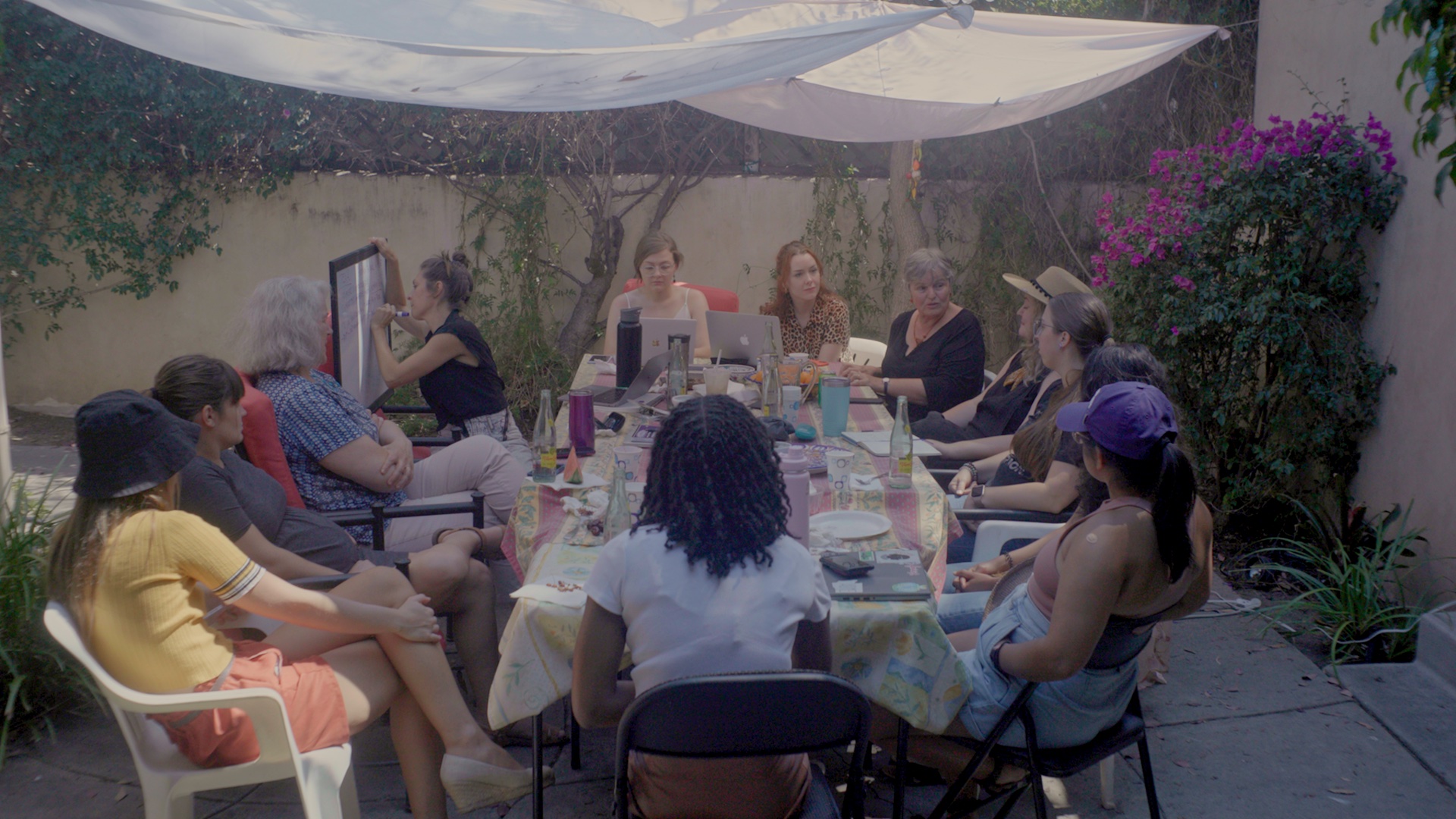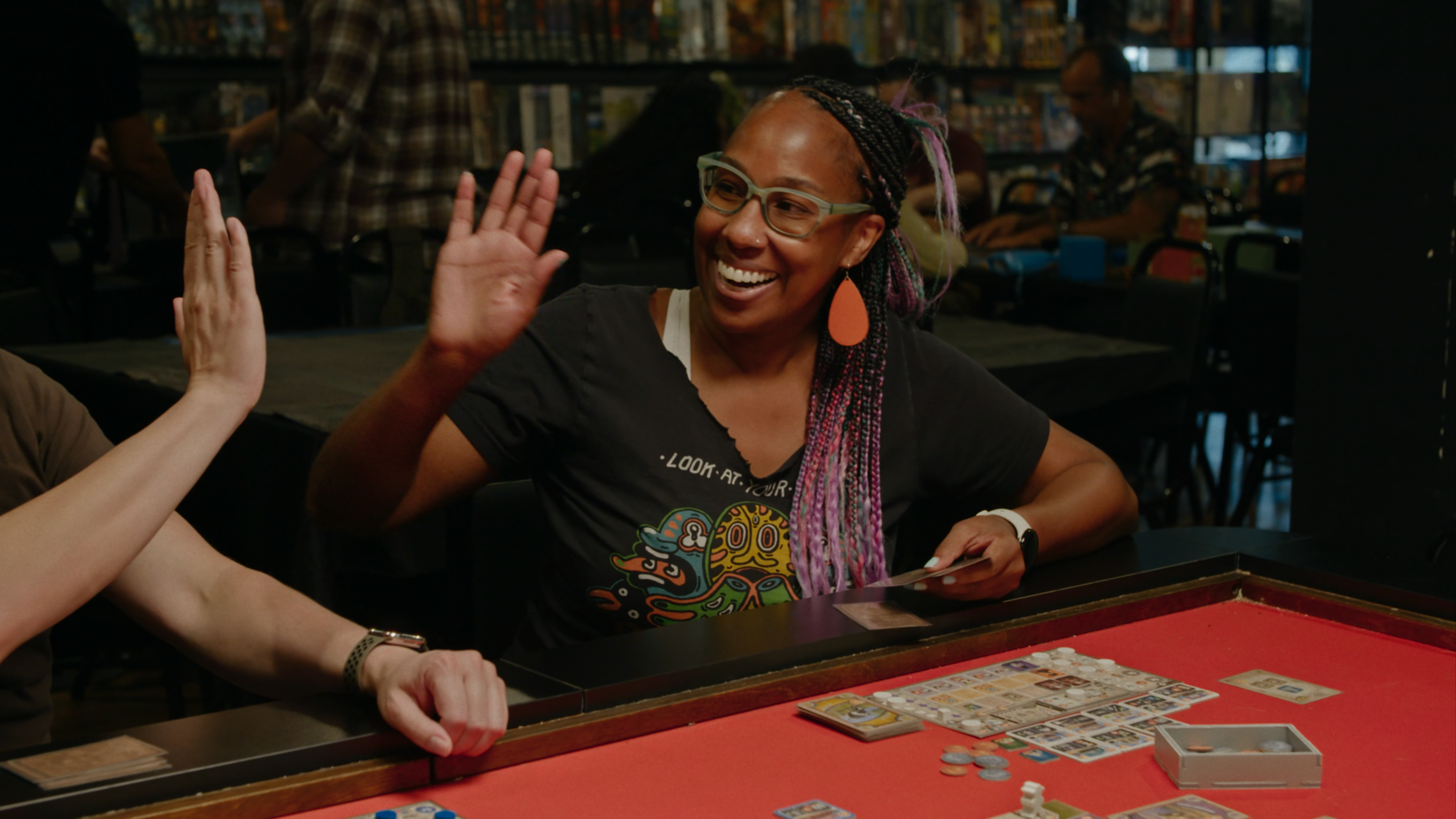
‘The Hobby’: A Love Letter to Board Gamers like My Son
The documentary reminds us how to revel in creative play and the company of others.
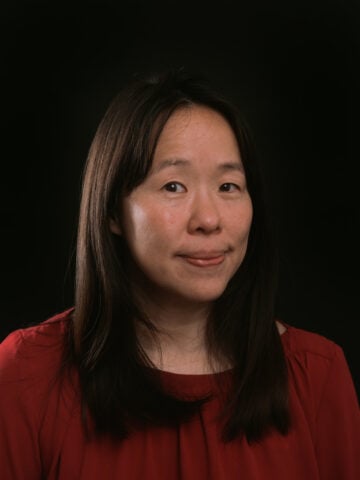
My 12-year-old son creates some wacky board games. When he was younger, there was Pillow Fight, where players spin a wheel to collect pillows to smack people, build a fort, or knock down pins. Then there was Chick-fil-A vs. Canes, a game where players collect coins by buying, selling, and promoting menu items from Texas’ favorite fast-food chicken places—but if you get stingy and don’t pay your workers, they’ll go on strike and you’ll find yourself without food. Recently, his creations have turned into more sophisticated battle strategy games, played according to pages and pages of rules.
For someone who’s always been painfully shy, board gaming is the language my son uses to engage with others. Sit down and play a board game with him, and after a few minutes he will reveal his personality in a way that he typically can’t in a classroom. That’s why I cried when I saw The Hobby.
Premiering at South by Southwest (SXSW) on March 8, the character-driven documentary The Hobby takes its title from what those in the board gaming world name their larger community and culture. Writer and director Simon Ennis, an avid board gamer who got hooked while working at a video store, follows designers as they reveal their creative process and players as they find community in this world.
Over the years, my family has collected two dozen games; we have a loose board game group; and we hang out at board game cafes. But The Hobby showed me how much bigger this world is. Toward the beginning of the film, masses of people from all backgrounds and walks of life descend onto the floor of the Gen Con, the largest tabletop game convention in North America, held every year in Indianapolis, Indiana. In this tight-knit subculture, where game designers and reviewers like podcaster Tom Vasel are treated like superstars, Vasel jokingly tells Ennis, “As soon as I leave, no one knows who I am.”
In the film, Thi Nguyen, philosophy professor at the University of Utah and author of Games: Agency as Art, tells Ennis that “the hobby” embraces “those who don’t fit into this world too well.” Nguyen says in his book: “In ordinary life, we have to desperately fit ourselves to the practical demands of the world.” And in that world, where we are driven by constant demands to be productive, to finish tasks, to achieve—where playing a three-hour game of Settlers of Catan might seem like a waste of time—it’s easy to see why people find a reprieve in “the hobby.” Nguyen theorizes that there is a “motivational inversion” for hobbyists—unlike athletes or others who compete to win or achieve a certain goal, hobbyists see the goal of winning as a means to creative play, to socializing with others for hours on end. When Ennis asks players and designers what the most important aspect of “the hobby” is, they all say, “It’s the people that matter most” or “the shared experience.”
From the bird’s-eye view of the board gaming world at Gen Con, Ennis dives into the lives of some serious players, including Mik, Starla, and Grant Fitch—an African-American family whose time with each other playing turned into penning reviews on social media and a family Youtube channel called Our Family Plays Board Games. Ennis also features his close friend and fellow member of his board game group Dan Corbett. Together with other friends, they survived the isolation of the pandemic by playing board games in Corbett’s cabin in the woods.
It is this experience that gets the competitive Corbett hooked, and the audience follows him while he prepares for and plays in the World Series of Board Games in Las Vegas. Like the World Series we’re more familiar with, tournaments at this World Series are highly organized events where professional commentators analyze games live on video, and winners receive chunky gold championship rings. Unlike the World Series we’re more familiar with, there’s no trash-talking from fans or sign-stealing from players—just a whole lot of admiration and love from fellow competitors. Corbett comes shy of winning a tournament, but Hanshi Li, a self-deprecating immigrant from Guangzhou, China, who met his wife in “the hobby,” takes the ultimate $25,000 award in the final game of the Viking-themed Blood Rage. Li says for him, “the hobby” is “the purest form of social interaction.”
It is this unique and shared experience that game designers strive to cultivate when they build a game. The audience learns through the stories of both beginner and expert designers that anyone can create a board game about virtually anything. We journey with newbie designers like musician Candace Harris and soft-spoken John Hague, as they craft, test, and launch their games, which are as varied as the interests of their creators. Harris’ game Stage Left is a music-themed deck-building game and Hague’s The Last Summit a postapocalyptic political diplomacy game. Ennis also shows that the designers’ processes are just as varied: Blood Rage designer Eric Lang starts by playing with game pieces on his bed, while Elizabeth Hargrave built a spreadsheet of her scientific research on the class, genus, habitat, wingspan, nest type, eggs, food, and endangered status of birds to create the game Wingspan.
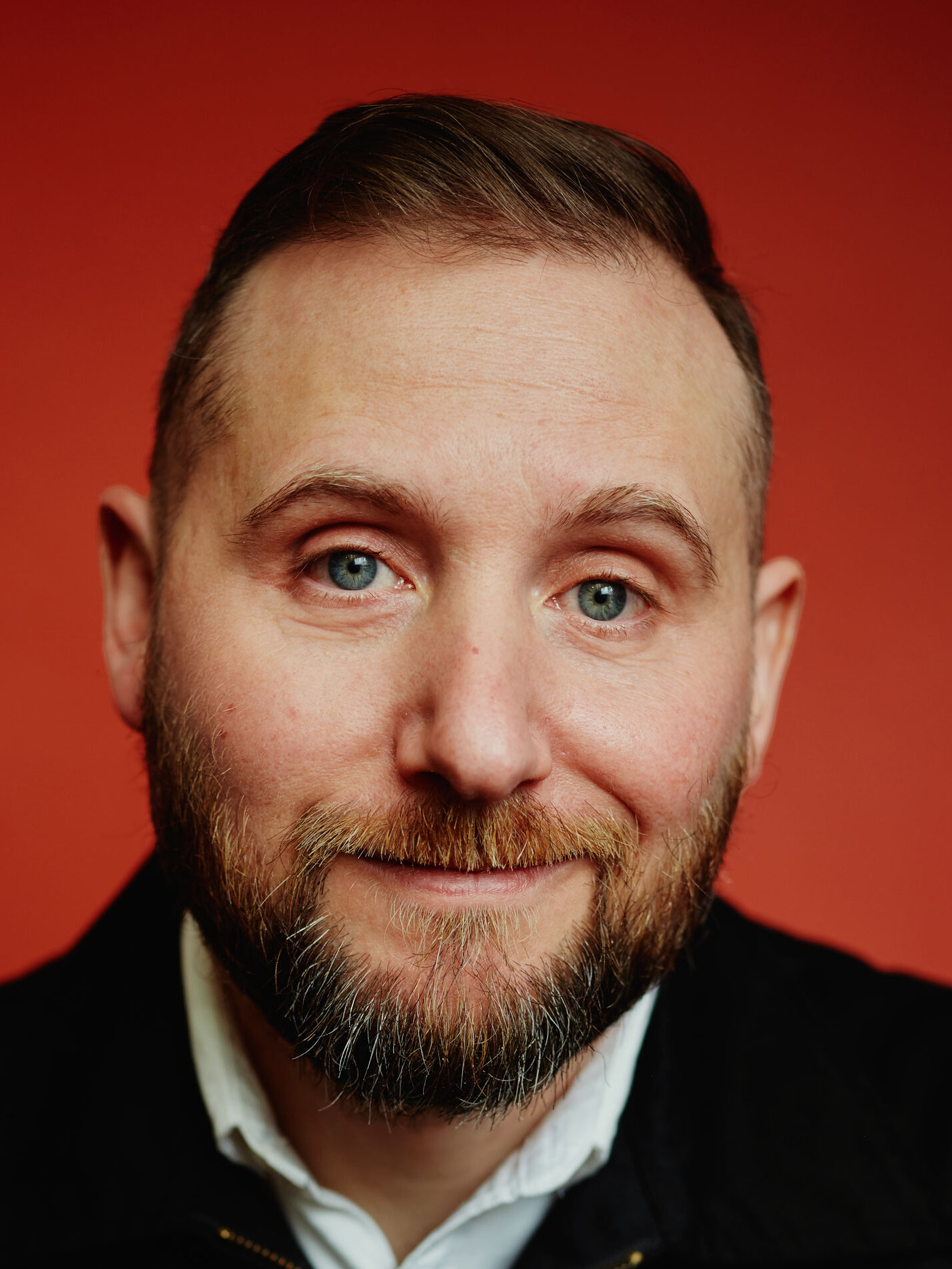
Perhaps the only distracting element of The Hobby was the character that bookends the film: a snooty, wizened curator from the British Museum, who only likes to play board games from antiquity. The board game snob is atypical among hobbyists. Overall, Ennis creates intimate portraits of diverse characters who are so earnest and open about their struggles, desires, and vulnerabilities that you find yourself cheering for them as they all proceed on their individual journeys. Openness, Ennis said later at a SXSW panel, is a hallmark of this community—and that shines through in the film.
“The hobby,” Nguyen writes in his book, is a break from the indifferent and arbitrary world we seem to face: “In games, we can engineer the world of the game,” its rules, objectives, environment, narrative, and “the agency we will occupy to fit our desires.”
It’s a kind of creative control that my 12-year-old son lacks in the broader world, as he navigates the increasing demands of homework, tests, and peer pressure, while we adults struggle to keep up with deadlines, bills, and everything else that makes us forget why we do the things we do. Thankfully, Ennis shows us that through “the hobby,” even if it’s just for a few hours, we can forget the incessant demands of the world, enjoy the company of others, and just play.
